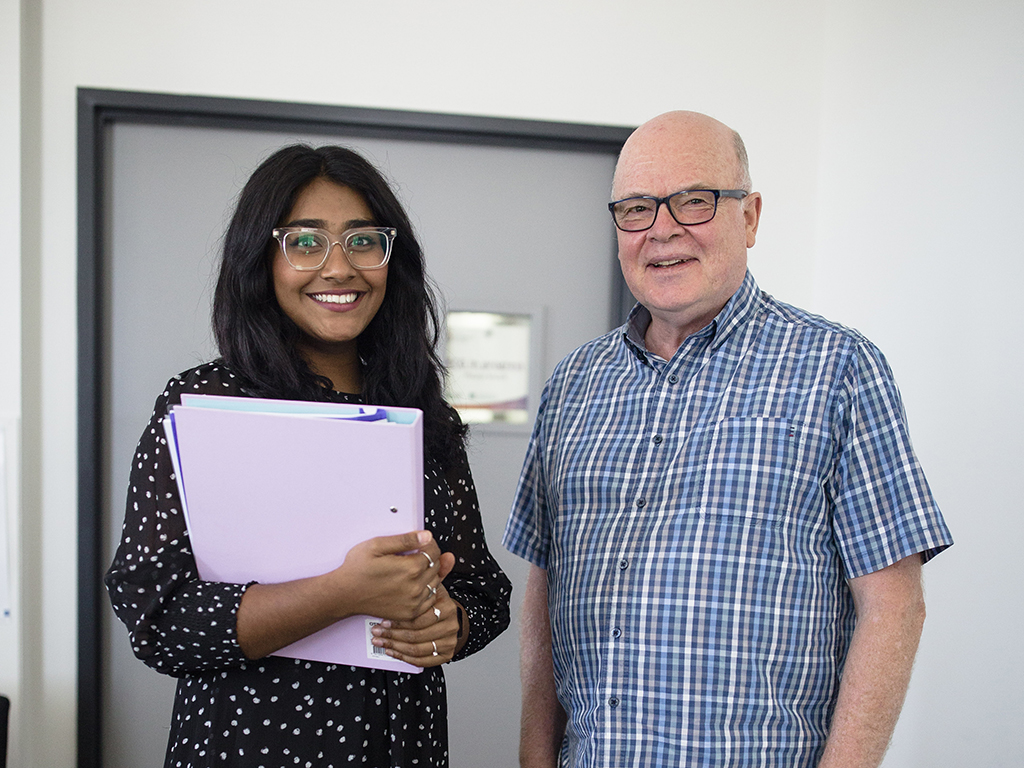This website uses cookies so that we can provide you with the best user experience possible. Cookie information is stored in your browser and performs functions such as recognising you when you return to our website and helping our team to understand which sections of the website you find most interesting and useful.
Research
Laser focus on AMD
A new study is investigating if laser treatment can halt the progress of age-related macular degeneration.
Most research into age-related macular degeneration (AMD) has focused on late-stage disease, when substantial cell damage has occurred and vision is at risk.
However, new research into a laser treatment at CERA is investigating ways of intervening during the intermediate stages of the disease to stop macular cells from dying.
The outcome could be a game-changer for the treatment of AMD.
“Age-related macular degeneration has early, intermediate and late stages, and most of the major research is focused on the late stage where vision is already threatened,” explains Professor Robyn Guymer AM, CERA Deputy Director and Head of Macular Research.
“We are much more interested in trying to stop people getting there in the first place.”
AMD affects cells in the macula – the central part of the retina at the back of the eye that provides the sharp central vision needed to read, drive and recognise faces.
About one in seven people with the earlier stages of AMD will progress to the late forms of the disease – dry AMD or wet AMD. This is when serious central vision loss can occur.
There is an effective treatment for wet AMD if it’s started early enough, but complications that threaten vision in wet AMD are often detected too late.
In 2022, Professor Guymer and her team embarked on the LIANA study, using an Australian-made 2RT laser from NovaEye, which aims to slow the progression of intermediate AMD in people who have the earliest signs of cell death.
The study builds on the promising results of the earlier LEAD study, which used the same 2RT laser and was conducted by Professor Guymer from 2012-2018.
“In the LIANA study, we’re essentially trying to identify people who have the very first signs of cell death and aiming to stop further cells from dying,” says Professor Guymer.
As the 2RT laser delivers a very short and targeted pulse of energy, the team can effectively target a crucial layer of cells without damaging surrounding tissue.

Measuring cell death
However, these patients don’t have noticeable signs of vision loss, so determining the trial’s success is quite a challenge.
“Even if we can stop the disease from progressing – how do we know if the patient actually sees differently?” says Professor Guymer.
Rather than using traditional eye tests to measuring changes in vision, Associate Professor Zhichao Wu, Head of Clinical Biomarkers Research, is using a more sophisticated technique called microperimetry and trying new ways to test the function of the affected area.
“With microperimetry, we can perform a targeted and detailed assessment of regions with the beginning of cell death,” says Associate Professor Wu.
The technique involves projecting light onto different points of the patient’s retina to get a detailed ‘map’ of the macula’s sensitivity to light.
“This will allow us to determine if the laser can not only prevent cell death, but also preserve visual function with an unprecedented level of precision,” he says.
Once complete, the LIANA study’s results will help inform a larger international study, to be led by Professor Guymer and her team in the near future, to further investigate the 2RT laser’s impact.
“Hopefully, we can slow down the disease’s progression and, as a result, have the first effective treatment for intermediate AMD,” says Professor Guymer.
This story was originally published in See the future: Annual Review 2022.

